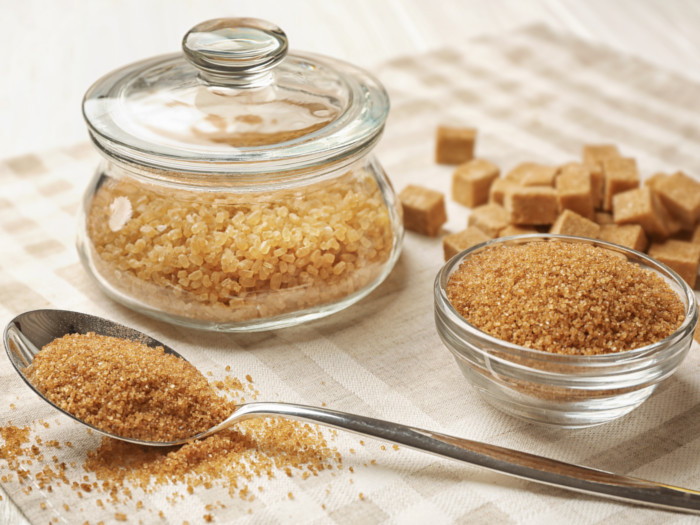Brown sugar is a variety of traditional white sugar that contains 4-10% molasses, which provides a brown color. The addition of molasses changes the flavor slightly, making it sweeter than normal sugar, possessing a burnt or caramelized flavor to your recipes. However, if you don’t use brown sugar very often, or if your brown sugar has become dried out and hard as a rock, you may need to use some of these brown sugar substitutes.
Substitutes for Brown Sugar
The best alternatives to brown sugar include molasses, muscovado sugar, coconut sugar, maple sugar, honey, and white sugar, among others.
White Sugar
In most cases, using brown sugar instead of white sugar only improves the flavor of a recipe, but substituting white sugar for brown sugar can diminish the flavor from desserts and baked goods.
For recipes that call for small amounts of either sugar, they can be used interchangeably in a 1:1 ratio. One can also use granulated white sugar in place of brown sugar.

Brown sugar is used very similarly to granulated white sugar, but it provides a touch of extra flavor. Photo Credit: Shutterstock
Muscovado Sugar
Muscovado is an unrefined or partially unrefined variety of sugar that has a higher molasses concentration than normal brown sugar. These crystals are dried in the sun, rather than in a centrifuge and tend to be stickier than normal brown sugar. So while you are baking, see to it that you either remove the lumps or sieve it before adding.
DIY Brown Sugar
You could make your own brown sugar if you have white sugar and molasses on hand. The proportions are, for every 200 g of granulated sugar, you will need 15 ml (1 tablespoon) molasses. You are free to increase the quantity of either of these constituents depending on your requirements.
Light Brown Sugar
Light brown sugar is a pale version of brown sugar that is mildly sweet and is used in more delicate baked goods and sweets. Add it in the same quantity as that of brown sugar to your preparations.
Maple Sugar
Maple sugar has a slightly different flavor than brown sugar, but it can add the sweetness that you may be lacking in your recipe; only use in moderation, as maple sugar is a very concentrated form of sugar. [1]
Coconut Sugar
Although not the most common ingredient in every kitchen, coconut sugar can be traded out in equal proportions for brown sugar. It can be used in all the baked goods that are fathomable with a coconutty flavor.
Caster Sugar
You can use caster sugar in baked items like sponge cakes, meringues, and souffles as its texture can easily complement the recipe. As it is finely ground, using less of it against brown sugar will help to keep the dish perfect.
Turbinado Sugar
Turbinado sugar is a type of raw sugar with a similar texture as brown sugar. You can add it in the same proportion as brown sugar in your culinary experiments.
Liquid Sweeteners
Molasses: As the key ingredient of brown sugar, it only makes sense that molasses can be used to substitute in a recipe. However, remember that brown sugar is only composed of about 4-6% molasses, so don’t add too much of molasses, or it will overpower your recipe.
Honey: Honey will slightly change the profile of your final dish, but it can work as a viable substitute for brown sugar.
Agave nectar: Health enthusiasts do not appreciate agave nectar but when nothing comes to rescue, you can work your recipe with this sweetener.
The thing with alternatives like honey, molasses, maple syrup, and agave nectar is that they will glorify your recipe for sure but also add more moisture to it. So, while you are excited to use any of them in your baked delicacies, get to know the basic guidelines on how much of these you can add to keep your confectionery perfect.
- You can substitute every 200 g of brown sugar bowl with 160 ml of the moist sweetener of your preference.
- Try and reduce the amount of other liquid ingredients in the recipe by at least 60 ml to keep the consistency normal.
- Sometimes, you will also have to lessen the cooking time as liquid sweeteners tend to caramelize quickly.
On a totally different note, remembering that Maroon 5 song. Sugar? Yes, please!
